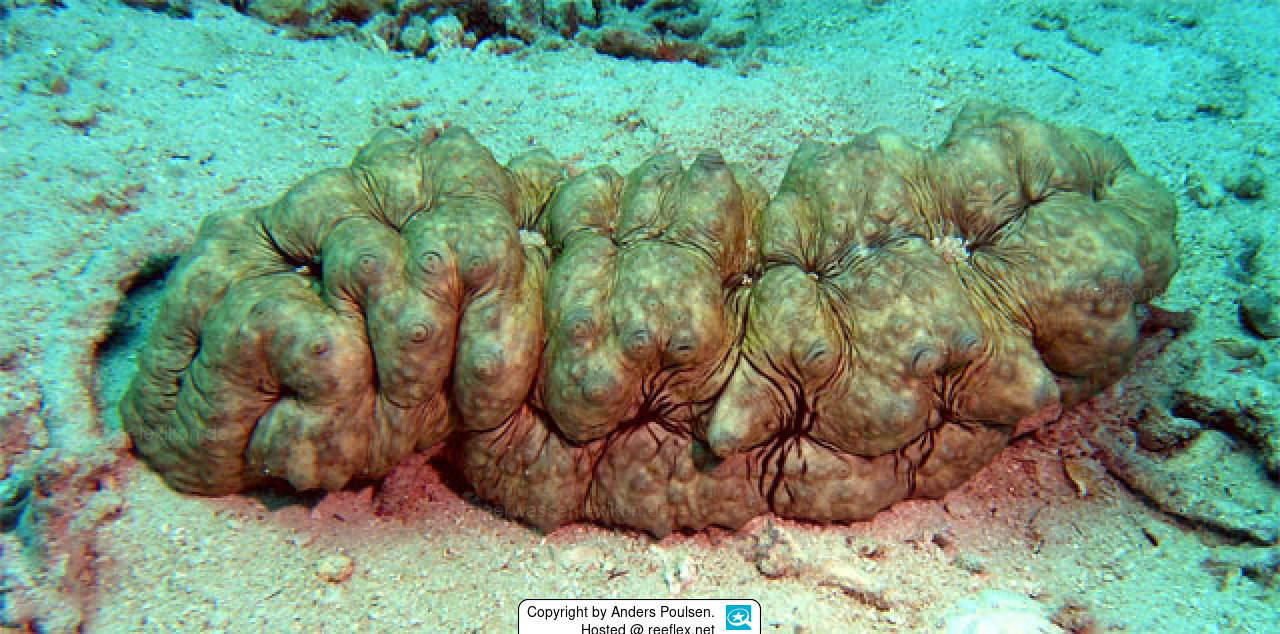Info
Stichopus vastus Sluiter, 1887
Stichopus vastus inhabits seagrass meadows, especially meadows with ribbon seagrass (Enhalus acoroides) and the seagrass Thalassia hemprichii, and under coralline algae. Larger specimens reside in deeper soft coral rubble areas outside seagrass habitats, it has also been observed on hard bottom and rubble
on coral rubble
The body of the sea cucumber is hard and heavy with large bumps in several irregular rows.
The base of the bumps reveals fine dark lines.
In addition to the large bumps already mentioned, which make the animal look like a bundle tied together, there are many smaller bumps all over the top of the body.
The color of the sea cucumber is variable, from sandy with darker spots and variable dark brown stripes between and around the large cone-shaped bumps,
to brownish, yellowish, reddish, greenish or even grayish.
The underside of the body is brown or yellow with three rows of short tube feet used for locomotion.
The mouth of the roller is directed downward and has up to 20 feeding tentacles surrounded by a collar of cusps.
Although it may seem unlikely at first, the sea turtle Caretta eats sea grubs as well as sea grass.
Stichopus vastus is fished because its large body makes it a good source of protein for coastal residents.
Stichopus vastus inhabits seagrass meadows, especially meadows with ribbon seagrass (Enhalus acoroides) and the seagrass Thalassia hemprichii, and under coralline algae. Larger specimens reside in deeper soft coral rubble areas outside seagrass habitats, it has also been observed on hard bottom and rubble
on coral rubble
The body of the sea cucumber is hard and heavy with large bumps in several irregular rows.
The base of the bumps reveals fine dark lines.
In addition to the large bumps already mentioned, which make the animal look like a bundle tied together, there are many smaller bumps all over the top of the body.
The color of the sea cucumber is variable, from sandy with darker spots and variable dark brown stripes between and around the large cone-shaped bumps,
to brownish, yellowish, reddish, greenish or even grayish.
The underside of the body is brown or yellow with three rows of short tube feet used for locomotion.
The mouth of the roller is directed downward and has up to 20 feeding tentacles surrounded by a collar of cusps.
Although it may seem unlikely at first, the sea turtle Caretta eats sea grubs as well as sea grass.
Stichopus vastus is fished because its large body makes it a good source of protein for coastal residents.







 Anders Poulsen, Dänemark
Anders Poulsen, Dänemark







